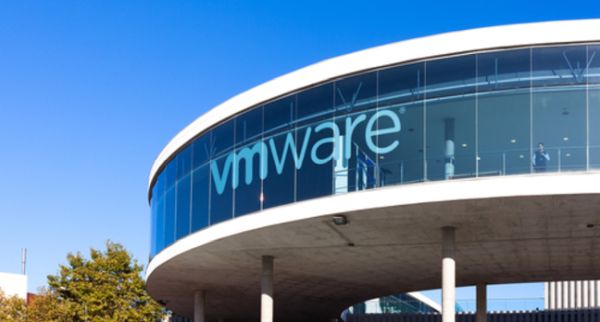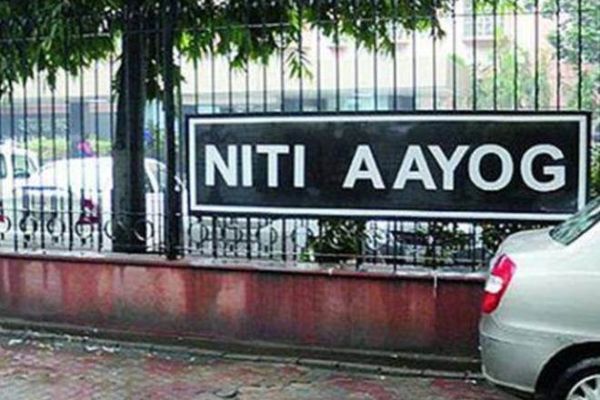
by Editor | May 25, 2021 | Business, Corporate, Corporate Governance, Large Enterprise, Markets, Technology
 By Nishant Arora,
By Nishant Arora,
Las Vegas : With businesses in India aiming to embrace modern data centres and extend the benefits of mobility to employees, Cloud infrastructure and business mobility leader VMware has intensified efforts to engage with top-level government officials.
After establishing its presence in the country in 2005, VMware India has grown to become a strategic contributor to the company’s global innovation engine.
The R&D team in India plays a critical role in product development in all of VMware’s strategic imperatives — the software-defined data centre (SDDC), Hybrid Cloud and end-user computing.
“We make it a point to meet senior Indian leaders and officials whenever they are in the US. We met Prime Minister Narendra Modi, Finance Minister Arun Jaitely and Andhra Pradesh Chief Minister N. Chandrababu Naidu recently and offered to increase investment in India to enhance our footprint in the country,” Sanjay Poonen, Chief Operating Officer, Customer Operations at VMware, told IANS in an interview here.
“Going forward, we are set to meet senior government officials like Niti Aayog CEO Amitabh Kant to extend support (for initiatives such as Digital India and Make in India) from our most strategic location globally, which is India,” India-born Poonen noted on the sidelines of the ongoing “VMWorld 2017” conference here.
The company’s research and development and support operations in India are second in size and scale only to those at its headquarters in Palo Alto, California.
Developers in Bengaluru and Pune contribute crucial components of VMware’s key technologies. The main technology areas are software-defined networking, virtualisation, virtual desktops, digital workspace, enterprise mobility management, cloud automation and operations monitoring.
In line with its commitment to invest $500 million in India by the end of this year, VMware in 2015 announced the inauguration of its state-of-the-art campus in Bengaluru — set up with an investment of $120 million.
The Dell-owned firm’s presence in India has now expanded to six locations, including R&D centres in Bengaluru and Pune.
“Mobility is fast changing India and the lifestyle of the next generation. The challenge ahead is to modernise data centres to meet the growing demand. VMware and its parent company Dell are looking at modernising the data centres — be it for enterprise, commercial or government,” said Poonen who will be visiting India in November.
Poonen joined VMware in August 2013 and is responsible for worldwide sales, services, ecosystems and alliances, global marketing and communications and cross-portfolio product marketing.
As enterprises the world over are moving from data centres to Cloud and desktop to mobile, said Poonen, the time is ripe for VMware to unleash its full potential in India.
“The Indian enterprises and small and medium businesses (SMBs) are looking at embracing mobile Cloud. We are capable of handling millions of devices and find no better place in the world than India to push for innovation that is at the cusp of digital transformation,” Poonen told IANS.
In July, VMware announced the opening of its first “AirWatch” data centre in India. The new data centre will deliver industry-leading AirWatch Enterprise Mobility Management (EMM) technology to businesses.
The AirWatch technology lays the foundation for delivering digital workspaces through “Workspace ONE”.
“Our AirWatch business is rapidly growing in India. We are looking at sectors like banking and finance, telcos and manufacturing which want efficient and modern data centres with secure end points,” said Poonen, an MBA from Harvard Business School.
Powered by AirWatch technology, Workspace ONE is an enterprise platform that empowers all employees to easily and securely use the IT tools, applications and devices they need to be successful at their jobs.
“We have a very good team in India. The Dell teams work very closely with us. We also have a credible set of partners and a robust local network that is being empowered by us. I look forward to a great India journey ahead,” the top VMware executive added.
(Nishant Arora is in Las Vegas at the invitation of VMware. He can be contacted at nishant.a@ians.in)
—IANS

by Editor | May 25, 2021 | Business, Economy, Large Enterprise, News, Politics
 New Delhi : Enhancing access to low-cost capital to businesses could serve as an important vehicle for improving the business environment, especially in poor states like Bihar, the NITI Aayog has recommended.
New Delhi : Enhancing access to low-cost capital to businesses could serve as an important vehicle for improving the business environment, especially in poor states like Bihar, the NITI Aayog has recommended.
In its report on “Ease of Doing Business”, the premier policy think-tank says that half the enterprises do not borrow from financial institutions and about a third consider lack of access to finance as a major obstacle for business in the country.
The survey covers over 3,000 enterprises across India and makes an effort to assess ease of doing business from their perspective as opposed to the perspective of policy makers.
“There is a large variation in the experiences of enterprises in different states regarding the access to finance. This suggests that enhancing the access to low-cost capital to businesses could be an important vehicle to improve business environment, especially in poorer states such as Bihar,” said the report.
It added that there is a robust correlation between a favourable business regulatory environment and greater economic activity with faster growing states having more conducive business environment than slow growing states.
“These results should provide the impetus to press ahead with the economic reforms agenda,” it said.
The survey also found out a strong association between greater ease of doing business and higher rates of growth.
“We found that fast-growing states systematically exhibited fewer delays in the grant of permits and clearances in various areas as also greater flexibility in the implementation of labour and environmental laws.”
“While our analysis does not establish a causal relationship flowing from greater ease of doing business to faster growth, it does strongly suggest that growth and ease of doing business form a virtuous cycle such that one reinforces the other,” the report said.
—IANS

by Editor | May 25, 2021 | Corporate, Corporate Governance
 New Delhi : The NITI Aayog on Monday recommend reforming labour laws and a greater flexibility in their implementation to enhance ease of doing business.
New Delhi : The NITI Aayog on Monday recommend reforming labour laws and a greater flexibility in their implementation to enhance ease of doing business.
In its “Ease of Doing Business” survey report, released by Law Minister Ravi Shankar Prasad and Industry and Commerce Minister Nirmala Sitharaman, the planning body said that firms in labour intensive sectors find compliance with labour-related regulations “particularly onerous”.
“This fact translates into enterprises avoiding labour-intensive sectors,” it said adding that a large number of firms covered in the survey reported that finding skilled workers, hiring contract labour and firing employees was a major obstacle.
“The fact that enterprises in labour-intensive sectors experience greater difficulty than those in capital-intensive sectors points to the need for further reform in this area,” said the report.
“In addition, more flexible labour laws will also allow enterprises to grow larger and reap economies of scale, generating productivity improvements, job creation and higher growth,” it said.
The survey covers more than 3,000 enterprises across India and makes an effort to assess ease of doing business from their perspective as opposed to the perspective of policy makers.
—IANS

by Editor | May 25, 2021 | Business, Corporate, Corporate Buzz, Large Enterprise

For representational purpose only
By Porisma P. Gogoi,
New Delhi : With most airlines and hotels lowering prices to attract customers during what is known as the “off-period” for travel, a vacation during the monsoon season is slowly catching the fancy of travellers in India.
The monsoon period, which is usually considered a lean period of travel — right after summer vacations and before the beginning of the festive season — is slowly emerging as a preferred time to holiday due to cost benefits and lower rush, experts suggest.
“People opting for a vacation during the monsoon benefit due to lower rates for stay and travel. About 75 per cent of peak season traffic is still seen for a monsoon vacation,” Aloke Bajpai, Chief Executive Officer and co-founder of travel search engine ixigo, told IANS.
“Most airlines and hotels drop their rates during the lean period to ensure the fill rate doesn’t dip below their viable/profitable levels,” he added.
Bajpai added that the preferred domestic destinations for monsoon travel are Goa, Manali, Coorg, Sikkim, and Malshej (Pune district), while international destinations include Colombo, Krabi (Southern Thailand), Malacca, Dubai and Kathmandu.
As per the latest World Travel and Tourism Council (WTTC) report, the Indian travel industry in 2016 generated over Rs 14 trillion (about $208 billion) — approximately 9.6 per cent of India’s gross domestic product.
The industry catered to about nine million foreign tourist arrivals last year.
“This gives us a fairer idea that people now enjoy exploring new places and experiences, and monsoon is no longer considered a gloomy season where people just sit inside and watch the rains,” said Manmeet Ahluwalia, Market Head, Expedia in India.
“It has become an experience in itself to travel and explore places during the monsoon… We have seen a 30 per cent spike in travel bookings as tourists flock to quaint resorts nestled amid plantations and forests,” Ahluwalia told IANS.
He said places like Cherrapunji, Mawsynram (Meghalaya), Kodaikanal and Araku Valley (Andhra Pradesh), as also the Andaman & Nicobar Islands and Kerala, had become among the top preferences for domestic travel.
“When it comes to international destinations, Bali, Thailand, Singapore and Sri Lanka are the popular picks,” he added.
For a better-planned holiday, these specialised search engines help travellers figure out the right destination by giving out personalised recommendations.
An interactive “Monsoon Planner” tool launched by Skyscanner, a global travel search engine, is one such instrument which features domestic and international destinations with lower rainfall than monsoon-hit cities in August.
“At Skyscanner it is our constant endeavor to assist travellers in overall vacation planning, right from destinations search to affordable deals of flights,” said Reshmi Roy, Senior Growth Manager at Skyscanner for India.
(Porisma P. Gogoi can be contacted at porisma.g@ians.in)
—IANS

by Editor | May 25, 2021 | Business, Investing, Large Enterprise, World
 Lima : Peru’s Foreign Affairs Ministry presented the “Pacific Alliance Business and Investment Guide 2017/2018” which seeks to promote regional integration, as well as attract more and better investments into Chile, Colombia, Mexico and Peru.
Lima : Peru’s Foreign Affairs Ministry presented the “Pacific Alliance Business and Investment Guide 2017/2018” which seeks to promote regional integration, as well as attract more and better investments into Chile, Colombia, Mexico and Peru.
Crafted by EY Peru, the guide —available in Spanish and English— contains attractive and relevant information on Pacific Alliance’s initiatives regarding trade and integration, as well as services and capital.
Likewise, the publication highlights the Latin American Integrated Market (MILA), which reached a total negotiated volume of US$152.208 billion at the end of 2016.
It also features a summary of Pacific Alliance member countries, as well as their production and export figures.
Additionally, it includes essential information on the rules governing investment, plus legal, tax and regulatory requirements to enter any of the four markets.
In this sense, the report guides investors —from around the world— in making decisions for business and investment development in each country, part of the regional mechanism.
Pacific Alliance Created in 2011, the Pacific Alliance has consolidated as the world’s eighth-largest economy, with a contribution of US$1.770 billion to accumulated gross domestic product, which represents over 38% of Latin America and the Caribbean’s GDP.
For 2017, an average growth rate of 2.3% is projected among its member countries, higher than the estimated growth for Latin America (1.1%).
The bloc attracts 41% of Foreign Direct Investment (FDI) allocated to the region, which amounted to US$42 billion in 2016.
—NNN-ANDINA





